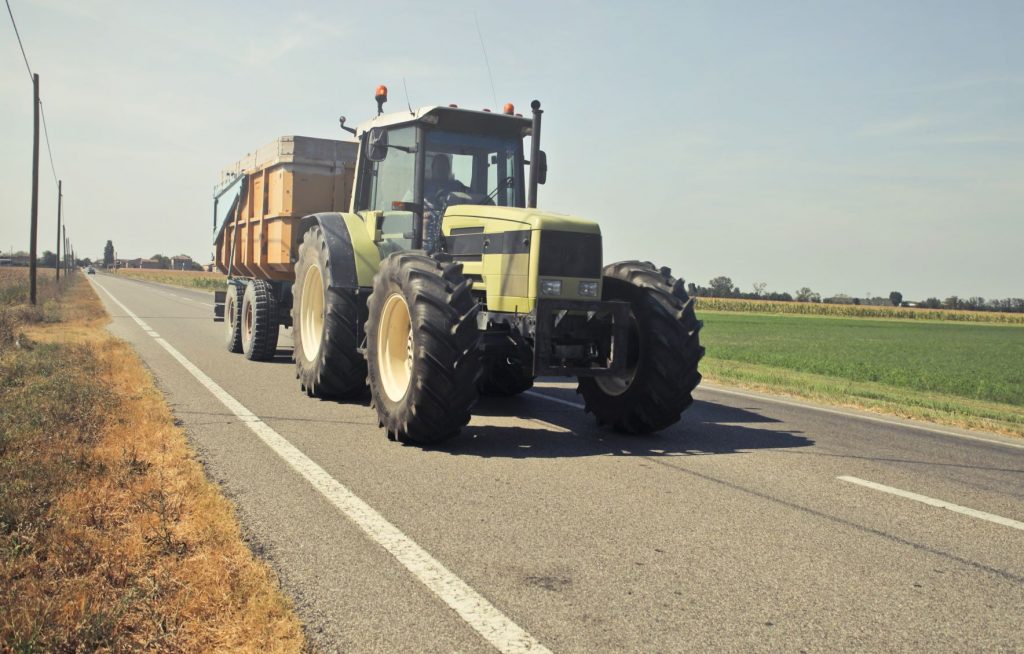Sharing the Road With Nebraska Farmers

Agriculture is an important industry in Nebraska, having contributed more than $21 billion to the state’s economy in a single recent year, as reported by the Nebraska Department of Agriculture (NDA). Harvest seasons vary, depending on the crop, but when the season is in progress, you can expect to see more tractors, agricultural vehicles, and farm equipment on public roadways. While these vehicles are invaluable to Nebraska’s economic growth, sharing the roads with farming equipment poses multiple risks to other drivers.
Risks of Farm Equipment on the Road
Every vehicle, from 18-wheelers to motorcycles, come with their own unique risks when sharing the roadways. Farm equipment are no different, and there are a number of risks associated with them that can cause a crash, including:
- Limited visibility: Despite common misconceptions, Nebraska is not a 100% flat state to drive through. Many counties have rolling hills, winding roads, thick grass or crop walls, and sharp turns – all of which make it difficult to see other vehicles. Because farm equipment will frequently move between rural roads and highways, it can be difficult to spot them when they are merging lanes.
- Operator inexperience: Skilled driving comes with proper training, time, and experience, and this is especially important for tractor operators. The size, weight, and unique design of farm equipment make them difficult to operate, and they should only be driven by experienced drivers.
- SMV signs: Public roads are required to have slow-moving vehicle (SMV) signs to inform drivers when they are entering a farming zone. When a driver sees these signs, it should be clear that they are going to be sharing the road with tractors or combines and should slow down to avoid a collision. However, drivers who have little experience with Nebraska roads may not recognize the signs or know how to handle themselves around farm equipment.
- Slower engines: Farm equipment is designed for a marathon, not a race, and won’t outpace any sports car or family sedan. Their slow speeds and steady pace mean they move slower than the rest of traffic. Other drivers may miscalculate how much time they need to brake or attempt to pass a slower tractor without checking to see if it is safe, causing a collision with opposing traffic.
- Limited space: Whether you are on a highway or rural road, farm equipment will often overlap two lanes, making it difficult to see around them or pass them.
How to Avoid Collisions With Tractors
While you may think it is easy to spot and avoid a tractor, many highways and rural roads in Nebraska have limited visibility due to sharp turns, hidden turn-offs, and walls upon walls of growing crops. That is why it is so important to follow specific safety guidelines when driving in Nebraska:
- Slow down: When you spot a tractor in the distance, make sure to drop your speed. These vehicles often travel at much slower speeds than cars and will take longer on turns. Maintaining a safe distance – preferably 50 feet – and braking early can be the difference between a peaceful drive and a catastrophic accident.
- Pass with caution: No driver wants to be stuck behind a slow farming vehicle going 25 miles an hour, so it is natural to want to pass them. This can be difficult if you are driving on a two-lane highway and have limited visibility. The best option is to wait until you have clear visibility past the farm vehicle into the opposing lane and enough time to safely overtake them. As always, make sure to signal before you begin speeding up and do not return to your lane until you see the farm vehicle in your rearview mirror. As a courtesy, you can also wait until the driver pulls to the side of the road or honk your horn lightly to let them know your intentions.
- Yield to wide farm vehicles: Farm vehicles are bigger, have a higher center of gravity, and are harder to steer. That’s why, when you see one heading towards you, it is best to move to the side of the road to let them pass. It ensures everyone has a safe drive, and can win you some brownie points with your local farmers.
- Review Nebraska driving laws: It can never hurt to re-read a Nebraska Driver’s Manual, even if you don’t have to renew your license anytime soon. These little booklets at the DMV contain a wide variety of information about local traffic laws and best practices, especially when encountering larger vehicles.
Nebraska Law Regarding Farm Equipment on Public Roads
While Nebraska Revised Statutes Section 60-6,288 states that vehicles wider than one hundred two inches are not permitted on the highways, there are a number of exceptions to farm equipment. Under most circumstances, farm equipment – including trailers, combines, tractors, and other vehicles – can only travel on a highway if they are:
- Traveling less than 25 miles in distance;
- Traveling during normal daylight hours; and
- Are being used for standard farming operations, such as transporting equipment, crops, or livestock.
These regulations are enforced to maximize the safety of every driver on the road, but tractor accidents still occur. In a recent year, the Nebraska Department of Transportation (NDOT) reported 126 crashes involving farm equipment. If you have been hurt in a wreck with a tractor or farm vehicle, call an Omaha personal injury lawyer with Bottlinger Law L.L.C. at (402) 505-8234 for a free case evaluation.
Bottlinger Law
Consultation Form
Our legal team is ready to help. Please fill out the form below to set up a free consultation with the Bottlinger Law team.